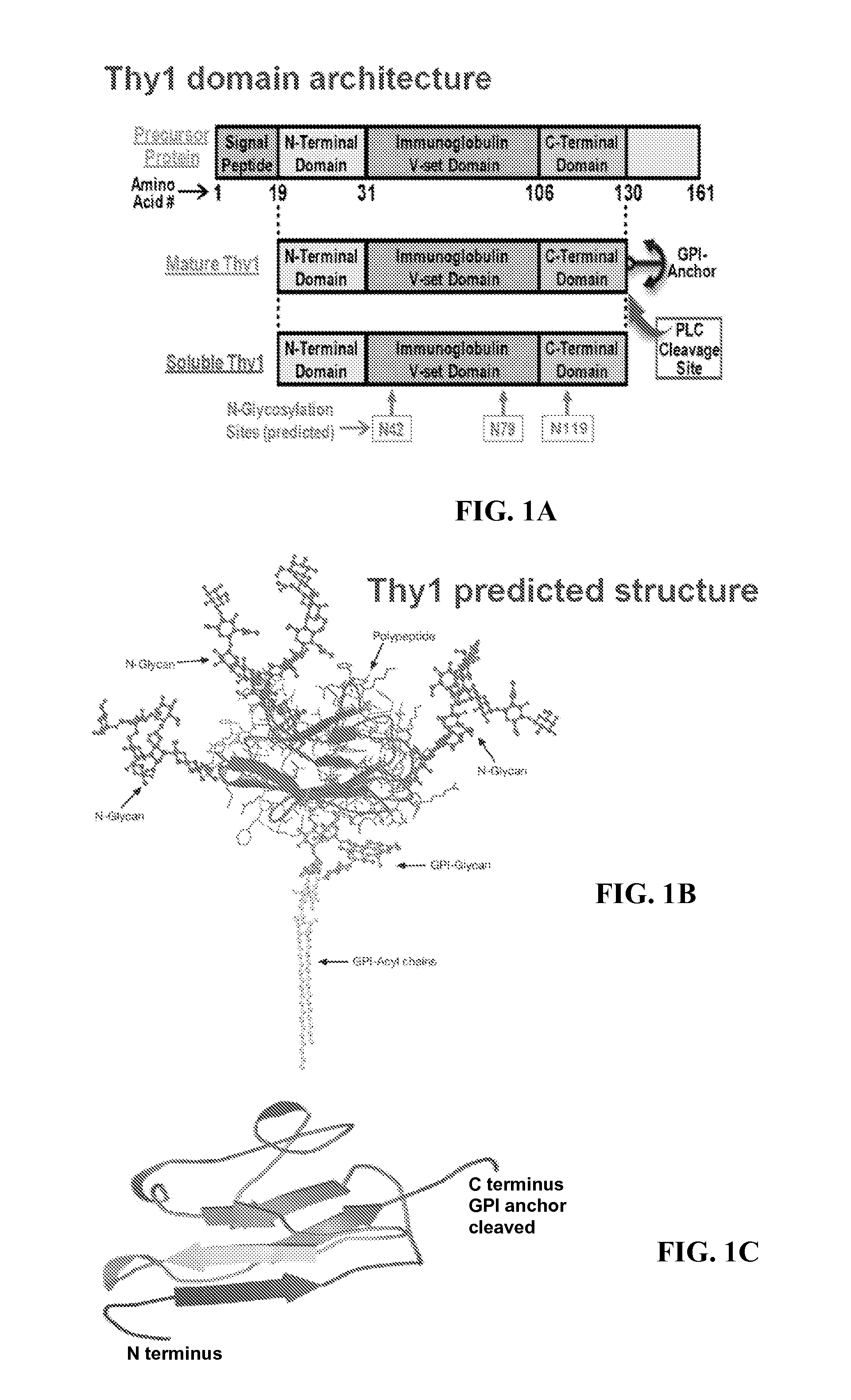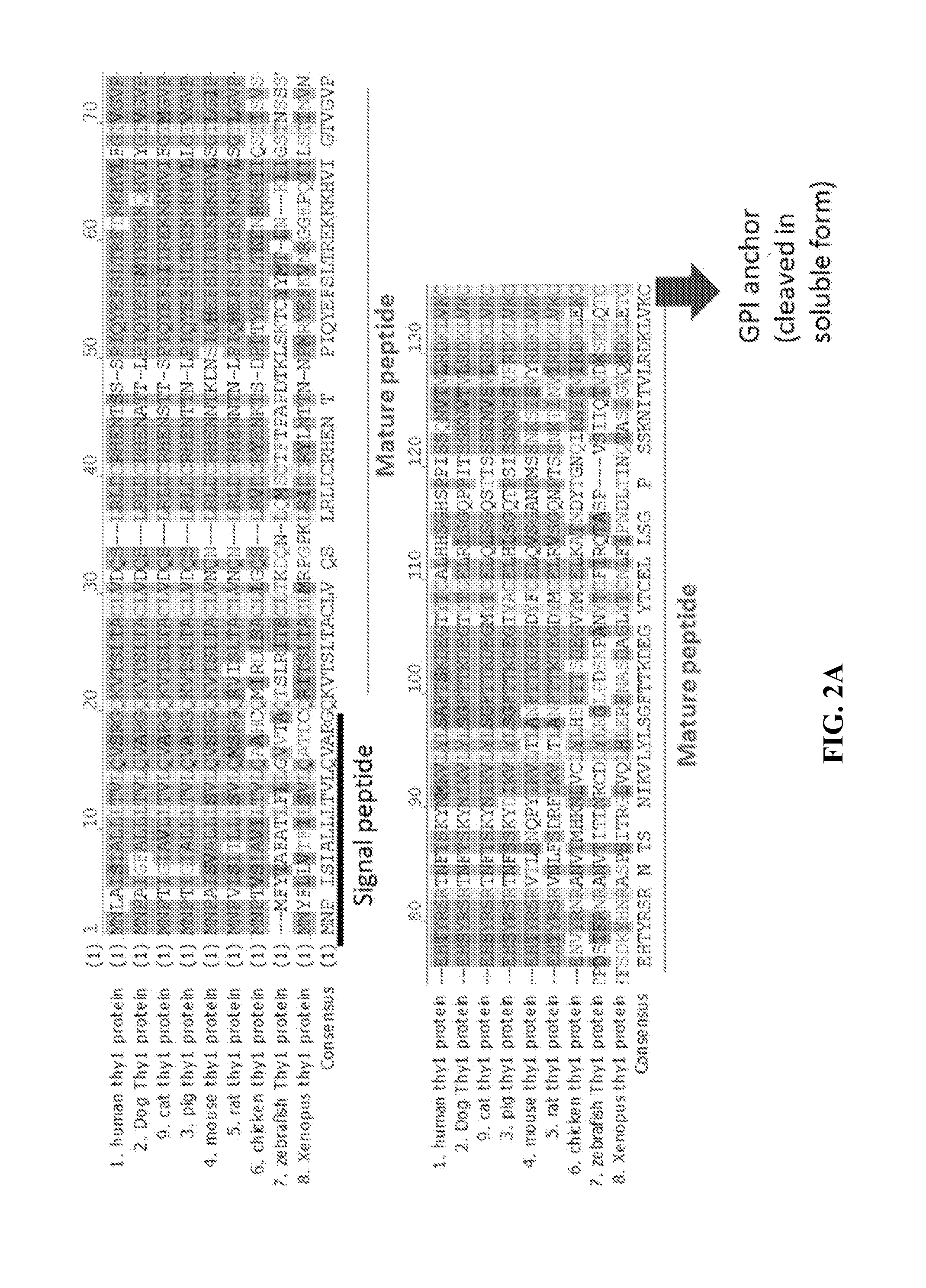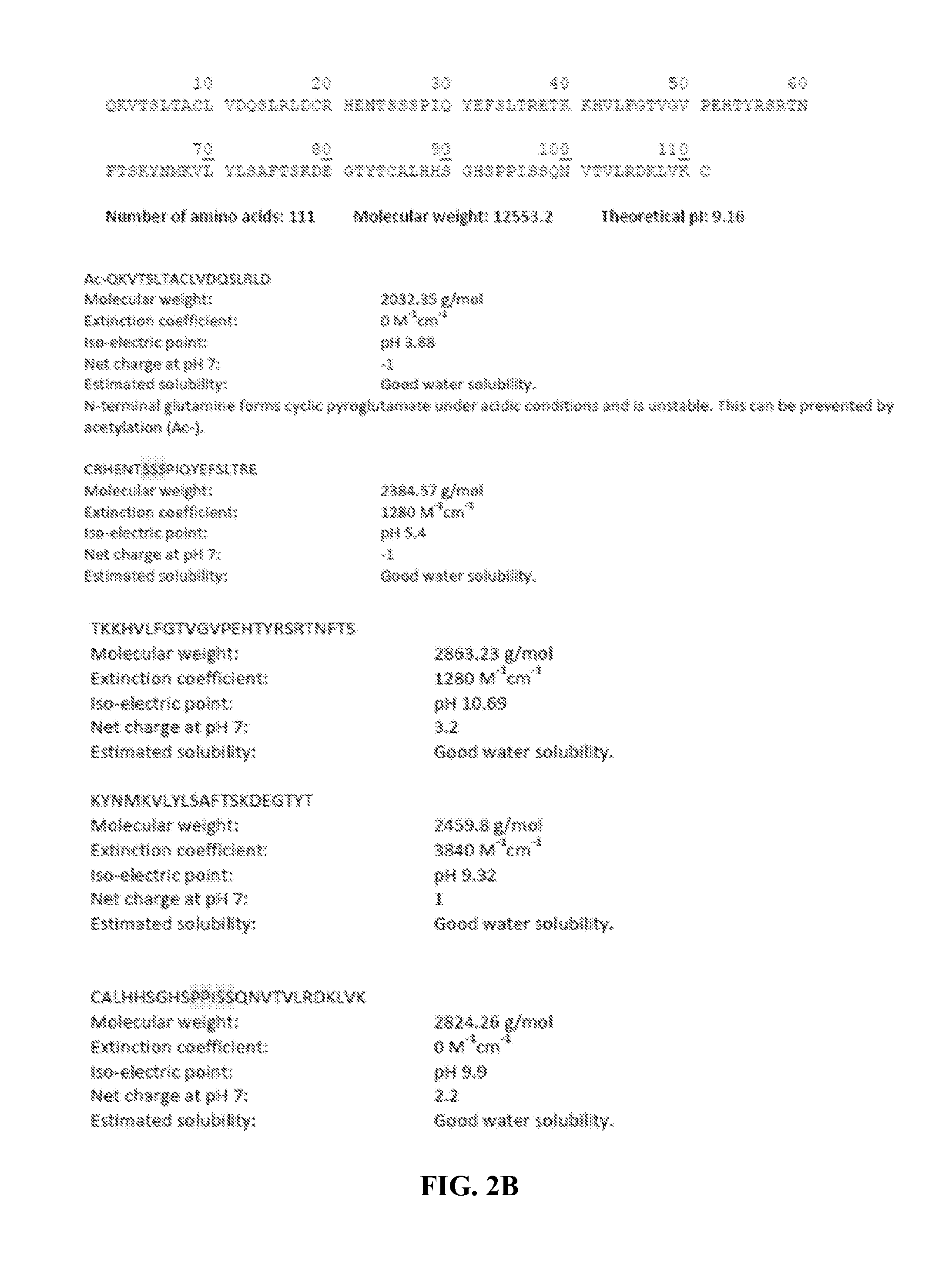Thy1 (CD90) as a novel therapy to control adipose tissue accumulation
a technology of adipogenesis and thy1 is applied in the field of adipogenesis regulation, which can solve the problems of inconvenient use, high risk of infection and tissue damage, and invasive surgical methods
- Summary
- Abstract
- Description
- Claims
- Application Information
AI Technical Summary
Benefits of technology
Problems solved by technology
Method used
Image
Examples
example 1
Thy1 Inhibits Adipogenesis
[0161]Stem cells are distinguished from other cells because they have an almost limitless ability to regenerate and have the potential to form multiple different types of cells required for normal tissue function. Mesenchymal stem cells (MSCs), also called multipotent stromal cells, present in adipose, bone marrow, dental pulp or umbilical cord tissues can form adipocytes, osteoblasts, myofibroblasts or other effector cells depending on the presence of various extracellular signals and molecular events. Adipocytes are the major storage cell for lipid-based energy. Adipogenesis requires activation of the ligand-activated transcription factor, peroxisome proliferator activated receptor gamma (PPARγ or PPARgamma). PPARγ is the master regulator of adipogenesis, inducing expression of key adipogenic genes such as glucose transporter type 4 (GLUT4) and fatty acid binding protein 4 (FABP4). Increased rates of adipogenesis or increased adipocyte size results in obe...
example 2
Thy1 Levels are Reduced by Obesogens
[0166]The following experiment involving human and mouse mesenchymal stem cells (hMSCs) demonstrates that Thy1 expression is dramatically reduced by TBBPA and TBT (see FIGS. 4A-4C).
[0167]In particular, hMSCs were induced to adipocytes with a rosiglitazone cocktail (adipogenic) or cocktail containing the putative obesogens BPA (1 μM), TBBPA (5 μM), or TBT (100 nM). Riu et al., “Peroxisome Proliferator-Activated Receptor Gamma is a Target for Halogenated Analogs of Bisphenol A,”Environ Health Perspect 119(9):1227-32 (2011); Kirchner et al., “Prenatal Exposure to the Environmental Obesogen Tributyltin Predisposes Multipotent Stem Cells to Become Adipocytes,”Mol Endocrinol 24(3):526-39 (2010); and Grun et al., “Endocrine-Disrupting Organotin Compounds are Potent Inducers of Adipogenesis in Vertebrates,”Mol Endocrinol 20(9):2141-55 (2006), each of which is hereby incorporated by reference in its entirety. The obesogen doses selected are based on litera...
example 3
Thy1 is a Target of miR-103
[0171]MicroRNAs (miRNAs) are endogenous, small RNAs that serve to regulate up to 90% of all human genes by suppressing target mRNA translation or increasing target mRNA degradation. Bartel, D. P., “MicroRNAS: Target Recognition and Regulatory Functions,”Cell 136(2):215-33 (2009), which is hereby incorporated by reference in its entirety. New studies link expression of certain miRNAs with diseases such as rheumatoid arthritis, obesity, and cancer. Furer et al., “The Role of MicroRNA in Rheumatoid Arthritis and Other Autoimmune Diseases,”Clin Immunol 136(1):1-15 (2010) and Xie et al., “MicroRNAS Induced During Adipogenesis That Accelerate Fat Cell Development Are Downregulated in Obesity,”Diabetes 58(5):1050-7 (2009), each of which is hereby incorporated by reference in its entirety. One such miRNA is miR-103, which is upregulated in obesity. Trajkovski et al., “MicroRNAs 103 and 107 Regulate Insulin Sensitivity,”Nature 474(7353):649-53 (2011), which is here...
PUM
| Property | Measurement | Unit |
|---|---|---|
| particle sizes | aaaaa | aaaaa |
| size | aaaaa | aaaaa |
| soluble | aaaaa | aaaaa |
Abstract
Description
Claims
Application Information
 Login to View More
Login to View More - R&D
- Intellectual Property
- Life Sciences
- Materials
- Tech Scout
- Unparalleled Data Quality
- Higher Quality Content
- 60% Fewer Hallucinations
Browse by: Latest US Patents, China's latest patents, Technical Efficacy Thesaurus, Application Domain, Technology Topic, Popular Technical Reports.
© 2025 PatSnap. All rights reserved.Legal|Privacy policy|Modern Slavery Act Transparency Statement|Sitemap|About US| Contact US: help@patsnap.com



